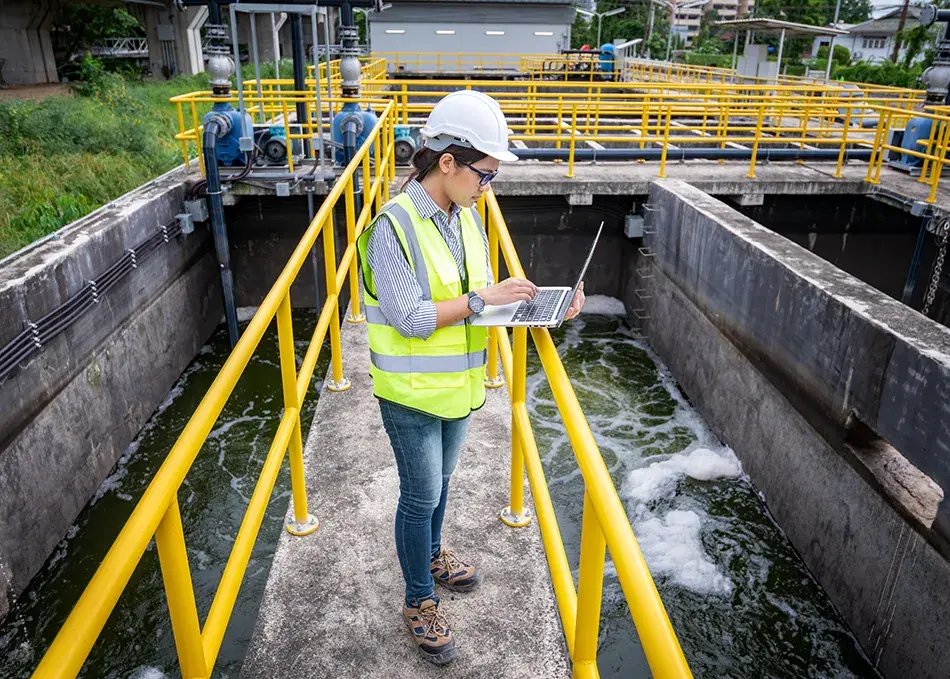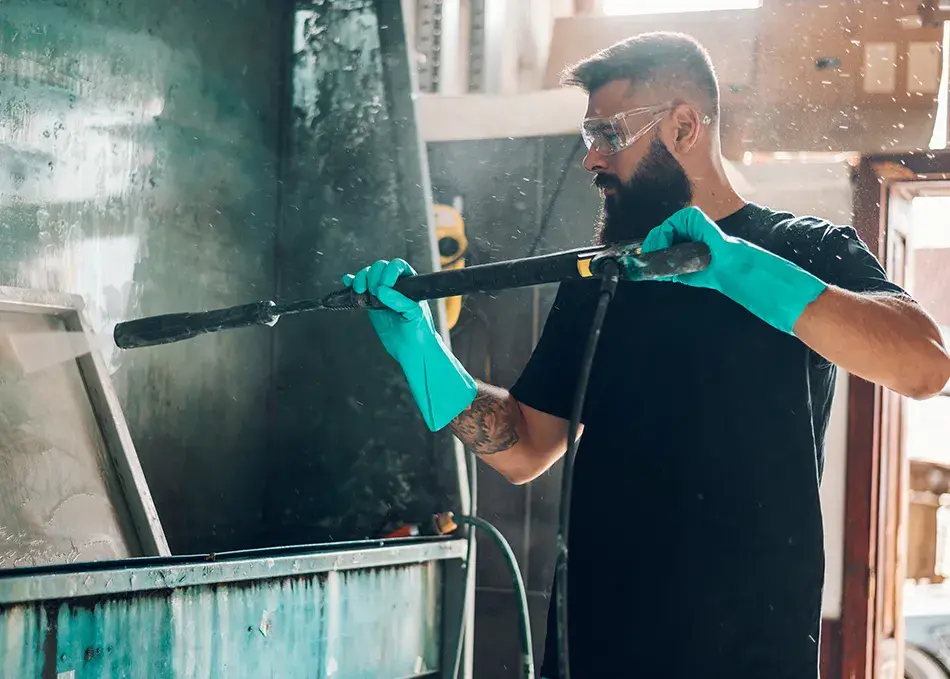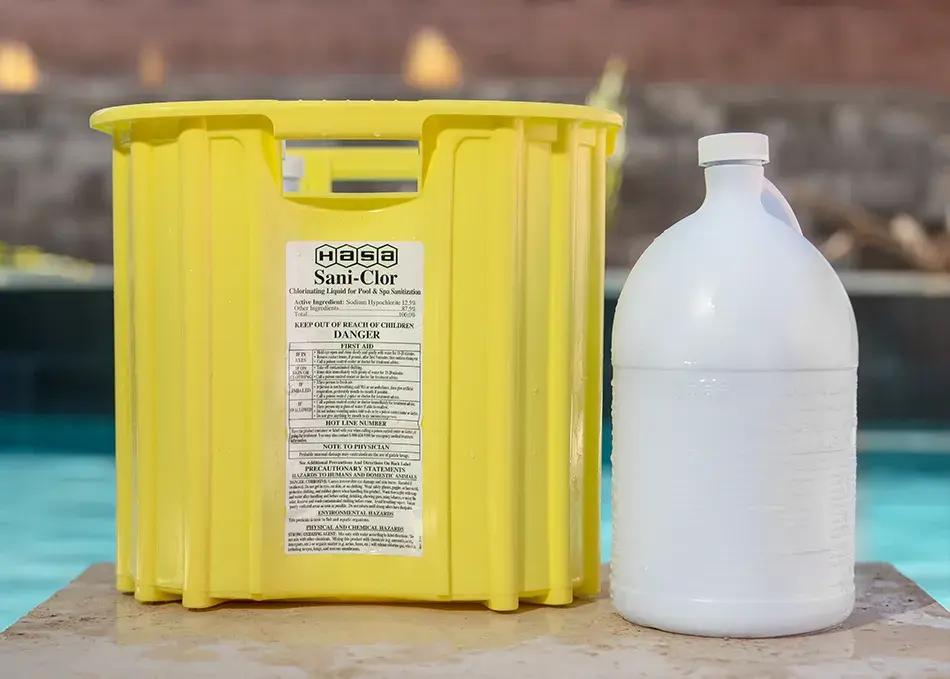Liquid Chlorine: The Perfect Pool Pro Tool for a Crisis
As recently published by HASA’s Terry Arko in Pool Pro Magazine Liquid chlorine has been around for a long time and is widely used in commercial and...
⬢ Pool Professionals
Professional-grade products. Expert support. Built for your business.
⬢ Pool Owners
Eco-friendly, easy-to-use solutions to keep your pool clean and clear.
⬢ Industrial
Efficient treatment & supply. Performance-focused operations support.
⬢ Municipal
Reliable solutions & delivery. Sustainable treatment for public systems.
⬢ Dealers
Help your pool & spa customers with trusted, professional-grade products.

⬢ Pool Products
HASA has the chlorine, algaecides, and sanitizers you need to keep your pool or spa clean and clear.

⬢ Hot Tub Products
Shop our full line of Hi-Temp spa care products, including Eco-Safe Clarifiers and pH Increasers.

⬢ Ancillary Products
Our eco-friendly water treatments are science-backed and purposefully focused.

⬢ Mini-Bulk Program
We deliver a premium 12.5% sodium hypochlorite solution for sanitizing commercial pools and large-scale water systems.
⬢ Blog
Learn from water chemistry experts.
⬢ Videos
Browse instructional how-to videos.
⬢ Safety Data Sheets
Download SDS sheets for HASA products.
⬢ Orenda Academy
For water chemistry & professional pool management knowledge.
⬢ Events
Find HASA at an event near you.
⬢ Rewards
Explore our HASA loyalty rewards program.
⬢ About HASA
Learn about HASA's commitment via the returnable packaging model.
⬢ Careers
Explore open positions with HASA.

As recently published by HASA’s Terry Arko in Aqua Magazine
While chlorine has had its ups and downs, it has been the silent savior in times of crisis.
In recent decades, chlorine has received some negative press. Now, amid the pandemic, chlorine has re-emerged due to recommendations from the Centers for Disease Control (CDC), the Environmental Protection Agency (EPA) and the World Health Organization (WHO). These health authorities all state that besides chlorine’s standard disinfectant value, it is also making pools safe from coronavirus.
It’s true that the incorrect use of chlorine can lead to problems. However, the correct type and dosage of chlorine have been proven as a safe and effective way to protect people from bacteria, viruses and mold. For centuries bleaching agents of chlorine have saved humanity from serious threats in a similar way that they are now.
People in 19th-century London were dying from cholera. In 1854 there were 500 deaths from cholera within 10 days. At that time it was the consensus of the medical society that the bacterium causing cholera was a result of breathing in foul airborne odors. Keep in mind that they did not have modern plumbing in 19th-century London, so much of the human waste was piled up at the end of town. If temperatures rose and the wind blew the wrong way it could create quite a stench. This theory of bacterial-laden odors was known as miasma. As sewers were just beginning to be built and utilized the human waste was directed into the River Thames. This is where the problem intensified as raw sewage was now being directed into the primary source of drinking water. The academia of the day was convinced that the cleanup of odor-causing waste would in turn decrease the cases of cholera, but the opposite occurred. Once waste was directed into the Thames the cases of cholera leaped to pandemic proportions. Dr. John L. Snow stood against the popular belief of miasma and proved that the cholera outbreak was a result of bacteria in the drinking water. His discovery led to a restructuring of the sewage system and an incorporation of chemical sanitizing. London was one of the first places in the world to use chlorine bleach to disinfect drinking water. The result was a great reduction in the number of deaths from cholera. In fact, due to improvements in the engineering and sanitization of the Thames, there has not been an outbreak of cholera in London since 1866.
In the early 1900s cases of typhoid fever were very high in the United States. In 1908 a physician named John Leal determined that the use of a chlorine bleaching compound could reduce the numbers of typhoid cases. As the chlorination of drinking water became more widely incorporated in the U.S. Dr. Leal’s prediction came true and the cases of typhoid dropped. The typhoid cases between 1900 to 1920 were 100 in 100,000. By 1920 that number had decreased to 33.8 per 100,000 annual cases. In 1960 the number of typhoid cases decreased to just 1 in 100,000. The simple act of safely incorporating chlorine bleach into drinking water was responsible for the exponential reduction of typhoid cases in North America.
By the summer of 2017 San Diego’s homeless population had skyrocketed to nearly 1,300 people. Cases of hepatitis A had also skyrocketed that year with 15 dead and nearly 400 infected. As the homeless population grew, so did the number of people conducting natural human functions in public areas. Waste on the street was a huge problem due to the increase of bacteria on routes which led to grocery stores, restaurants and businesses. The county sprang into action and issued a directive that streets and sidewalks be washed down with a solution of bleach. Contractors began washing down streets with a diluted solution of sodium hypochlorite. During this process hazardous materials such as human waste or needles are thoroughly soaked and allowed to sit for 10 minutes. Contaminated materials are then removed and the area is washed again with the bleach solution. Mike Saag, a professor of medicine with a focus on infectious diseases at the University of Alabama, Birmingham, states that San Diego’s street washing approach is reasonable for stemming the spread of hepatitis A.
“If there’s a sanitation problem, then the thing to do is clean up the area, and bleach is probably the best disinfectant that we have for this type of viral infection,” says Saag. Many cities in Southern California dealing with an increased homeless population have begun the regular practice of washing streets and sidewalks with liquid bleach.
Hurricane Harvey hit Southeastern Texas hard. Over 204,000 homes were damaged. Three weeks after the storm 3,900 homes were still without power. Nineteen water systems were non-operational, and boil and disinfection-of-water mandates were in place in many areas. The flooding in Nederland, Texas was unprecedented. The storm dumped 60.5 inches in the area, a record for the continental United States. This was classified as a 1,000-year flood event. The scope of the flooding in southeast Texas was the size of the state of New Jersey. 70% of the 1,800 square miles of Harris County was covered in at least a foot and half of water. The sheer weight of all this water caused the earth’s crust to depress and Houston to sink 2 centimeters. The vast convergence of the flood quickly spread thousands of gallons of water laden with raw sewage, bacteria and toxic chemicals. Most of the damage in neighborhoods was largely related to the influx of dirty water. This led authorities to recommend the use of sodium hypochlorite liquid bleach to be used for every task from purifying drinking water to cleaning up backyard pools and mold remediation. Soon after the hurricane the Water Quality and Health Council posted a page designed for Hurricane Harvey cleanup. This page encouraged the use of household liquid bleach to disinfect drinking water, home surfaces and materials.
Liquid sodium hypochlorite is one of several chlorinating compounds. In the case of disease outbreaks or environmental catastrophes it is the most widely recommended form of chlorine available. One great benefit of bleach is its ability to both sanitize and disinfect. These two terms may seem to be synonymous, however, according to the American Chemistry Council, “sanitizing” lowers the number of germs to levels considered safe by public health standards or requirements, while “disinfecting” kills germs directly using antimicrobials on surfaces. Since liquid bleach is recommended for both water and surface treatments there are several applications recommended by the CDC, EPA and WHO for disinfection and sanitizing.
Sodium hypochlorite creates a powerful germ-killing agent known as hypochlorous acid. This killing agent is highly effective at inactivating up to 99.9% of bacteria in water. Depending on the dilution it can also work to disinfect surfaces to remove bacteria and viruses. The human body makes use of this very same chemistry. Our white blood cells create hypochlorous acid from sodium chloride in the bloodstream to fight off any invasive bacteria. It’s pretty amazing that the chemistry of sodium hypochlorite bleach uses this same natural defense in water and on surfaces.
Liquid bleach has been manufactured using the same method since the 1700s. It starts as common salt (sodium chloride) which is broken into chlorine and sodium hydroxide and then recombined with water to make bleach. Sodium hypochlorite liquid bleach is available in several different strengths. Common household bleach formulas are 5.25% to 6% strength. There are industrial and swimming pool formulations that vary from 10% to 12.5%. All these formulas of sodium hypochlorite are effective at destroying germs in water and on surfaces. Each type of liquid bleach provides label directions specific to its use to sanitize and disinfect.
Some still try to make chlorine bleach out to be a villain, but research shows it has been and remains one of the premiere life-saving materials throughout human history. Here’s what the CDC says on its Safe Water page:
“Although a number of other disinfectants (calcium hypochlorite, ozone, UV, solar disinfection) and treatment processes (filters, slow sand filtration) have been investigated, sodium hypochlorite appears to offer the best mix of low cost, ease of use, safety and effectiveness in areas where there is enough water to drink and water is not excessively turbid. These characteristics are the reasons why most water treatment systems in the U.S. and Europe have been using chlorine for disinfecting drinking water for nearly 100 years.”
Based on the valiant performance of liquid sodium hypochlorite bleach throughout centuries and during the current pandemic, perhaps it’s time to give it a medal.
Terry Arko has over 40 years of experience in the pool, spa and hot tub industry, working in service, repair, retail sales, chemical manufacturing and product development. He is a CPO instructor through the National Swimming Pool Foundation. He also serves as instructor for the Pool Chemistry Training Institute to certify residential pool techs. Terry is an active member on the Association of Pool and Spa Professionals Recreational Water Quality Committee. He currently works for HASA.
Additional Resources:
https://www.chlorine.org/history-of-drinking-water-chlorination/
https://www.npr.org/sections/thetwo-way/2017/09/13/550674476/san-diego-washing-streets-with-bleach-to-combat-hepatitis-a-outbreak
http://www.choleraandthethames.co.uk/cholera-in-london/cholera-in-westminster/
https://www.scientificamerican.com/article/how-does-chlorine-added-t/
https://www.chemicalsafetyfacts.org/chlorine-bleach-sodium-hypochlorite-solution/
https://www.politico.com/sponsor-content/2015/06/element-of-suprise/

As recently published by HASA’s Terry Arko in Pool Pro Magazine Liquid chlorine has been around for a long time and is widely used in commercial and...

1 min read
As recently published by HASA’s Terry Arko in Aqua Magazine Defining what liquid sodium hypochlorite is-it isn’t liquid chlorine In the swimming pool...

HASA is a big provider of liquid chlorine in my region and the familiar yellow cases and white bottles are available at local pool stores as...